In the following procedure, you define the structure of your character model for MotionBuilder by mapping the required nodes in the Mapping list. Character mapping describes the character model for MotionBuilder, indicating what are the legs, arms, and so on.
Although you can load a skeleton definition template from the Character Controls window to map and characterize a character, or by dragging the Character asset onto a character model, this tutorial shows you how to manually map Mia’s structure.
To complete the character map:
See Prepare the scene.
A Character asset is added in the Navigator window Scene browser. The Definition settings for this Character asset are displayed in the Navigator window Definition Settings pane.
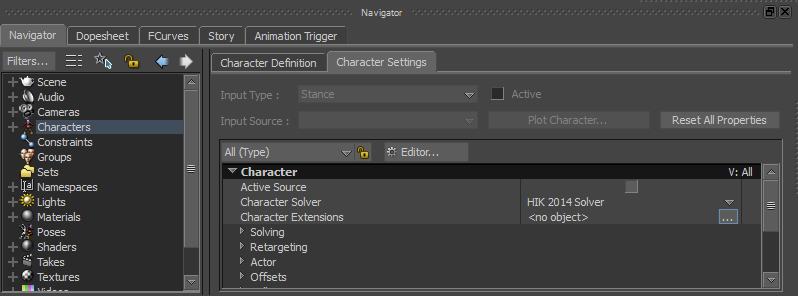
Navigator window displaying the Character asset and its Character Settings
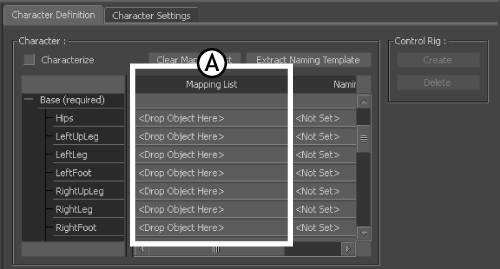
Character Definition pane: A. Base nodes
This group of nodes is required for MotionBuilder to recognize the structure of your character model. If you had automatically characterized this character, the Mapping list would be populated with the character’s bone names.
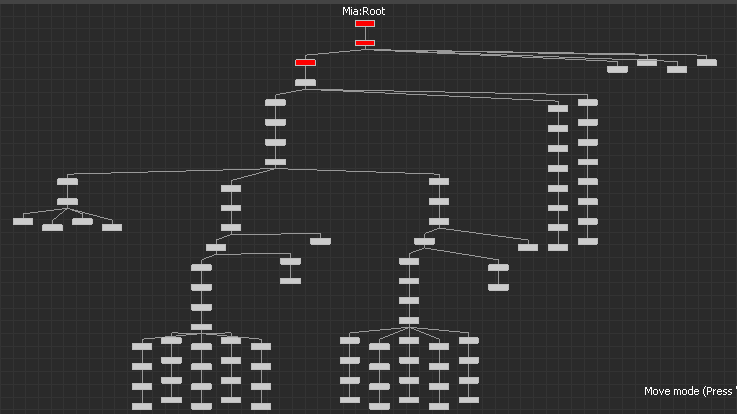
Schematic view of Mia’s structure
The Schematic view makes it easier to select bones from the model’s hierarchy because each bone is represented as a rectangular node.
 ) to lock the view of the Character Definition pane.
) to lock the view of the Character Definition pane. 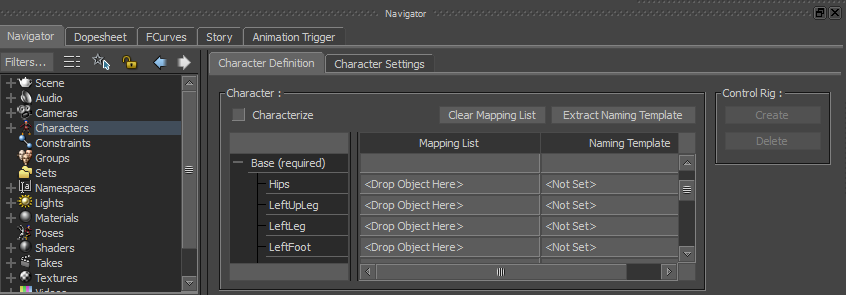
 or Ctrl-drag) and pan (
or Ctrl-drag) and pan (  or Shift-drag).
or Shift-drag).
These navigation buttons are at the to centre of the Viewer window.

The Find Model By Name dialog appears.
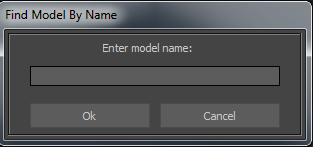

Mia:LeftUpLeg node selected
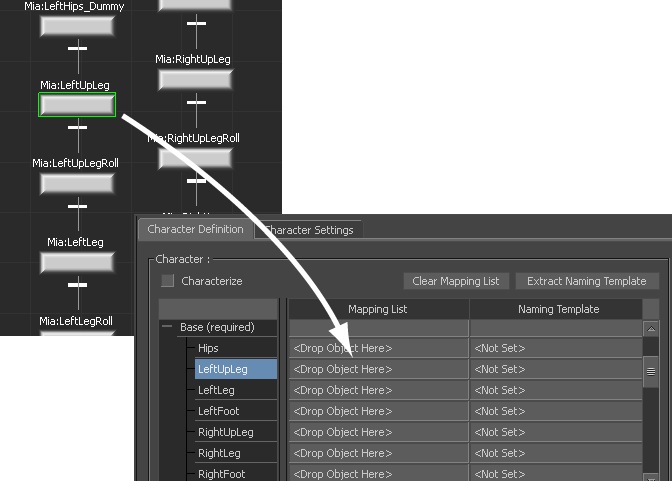
Mia’s LeftUpLeg node mapped to MotionBuilder LeftUpLeg
When you characterize this character, MotionBuilder recognizes that for this skeleton the LeftUpLeg node is called Mia:LeftUpLeg.
| Bone | Slot | Mapped |
|---|---|---|
| Mia:Hips | Hips | |
| Mia:LeftUpLeg | LeftUpLeg | x |
| Mia:LeftLeg | LeftLeg | |
| Mia:LeftFoot | LeftFoot | |
| Mia:RightUpLeg | RightUpLeg | |
| Mia:RightLeg | RightLeg | |
| Mia:RightFoot | RightFoot | |
| Mia:Spine | Spine | |
| Mia:LeftArm | LeftArm | |
| Mia:LeftForeArm | LeftForeArm | |
| Mia:LeftHand | LeftHand | |
| Mia:RightArm | RightArm | |
| Mia:RightForeArm | RightForeArm | |
| Mia:RightHand | RightHand | |
| Mia:Head | Head |
After completing the character mapping process for the Base group, the Mapping list resembles the Mapping List shown in the following figure.
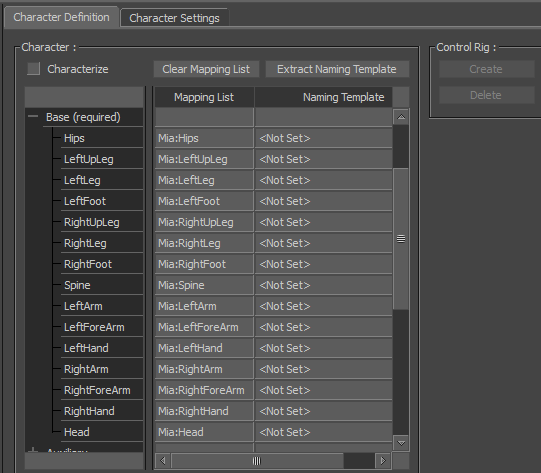
Mia’s base bones mapped to the Base nodes in the Mapping list
The Character mapping is now complete.
In the Character Controls Definition pane, the green symbol ( ) indicates the mapping is valid.
) indicates the mapping is valid.
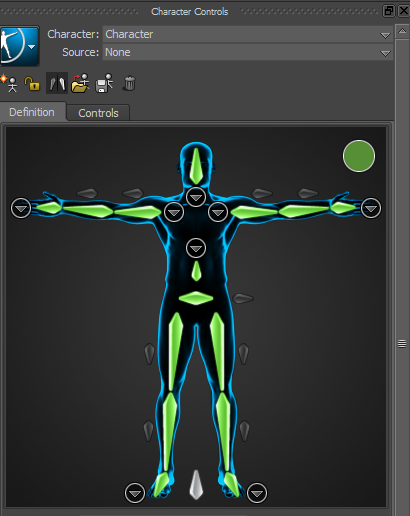
 Except where otherwise noted, this work is licensed under a Creative Commons Attribution-NonCommercial-ShareAlike 3.0 Unported License
Except where otherwise noted, this work is licensed under a Creative Commons Attribution-NonCommercial-ShareAlike 3.0 Unported License